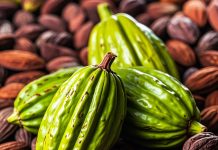
The use of vegetable proteins in food products has been increasing in recent years, both for the growing demand for healthy foods (free of cholesterol and saturated fats that are typical of food of animal origin) and for economic reasons (lower cost than meat proteins and few food of animal origin, especially in developing countries). Among the areas in which vegetable proteins are most frequently used: Baked products: adding vegetable proteins (especially legume flour) has nutritional advantages thanks to the ideal combination between the essential amino acids of cereal flours and those found in legume flour. Moreover, advantages are related to the structure and other characteristics of the product: adding such proteins helps giving more solid structure and facilitates rising (although not to the same levels of gluten addition). The replacement of a part of wheat flour with legume flour gives good results, if such part does not exceed 20-30%; with higher percentage less fluffy products are obtained. The enrichment with vegetable proteins also allows retaining a greater amount of water in the mixture, and impact on the organoleptic properties is generally positive (but variable depending on the type of used plant) provided that the added percentage is not too high. Another important application field for plant proteins in the bakery industry concerns the gluten-free product lines for consumers with celiac disease.
Dietary and slimming foodstuff: the consumption of foods rich in proteins seems to be linked to a higher sense of satiety and a progressive loss of weight, hence the spreading of many weight-loss diets and product lines with high protein content (including drinks) for overweight consumers: for the formulation of these products, the use of vegetable proteins is ideal as well as cheaper and perceived as healthier by consumers themselves. Product lines for sporty people: proteins of vegetable origin are widely used in bars and other products for sporty people, to be consumed after training to facilitate muscle development and strengthening.
Meat products and meat substitutes for vegetarians: it is interesting to note that the possible applications of vegetable proteins cover all food sectors, including meat and its by-products. Indeed, there are many meat preparations which benefit from the addition of these proteins as texturing and bulking agents, giving products with a high nutritional value.
 Other areas of application of vegetable proteins are products for babies including infant formula milk and milk substitutes for allergy sufferers, and extruded snacks to which vegetable proteins help giving structure. The most often used plants as a source of vegetable proteins belong to the Fabaceae family (legumes), which is rich in proteins (from 17% to 30% of fresh weight). The market offers products such as flour (protein amount not exceeding 65%), the concentrates (protein ‘> ‘65%) and the isolated (proteins > 90%). These proteins show interesting chemical and rheological characteristics which make them advantageous when adding them as texturing agents to foods, such as solubility, ability to retain fats and water, emulsifiability and easy digestibility. Among the most commonly used legumes:
Other areas of application of vegetable proteins are products for babies including infant formula milk and milk substitutes for allergy sufferers, and extruded snacks to which vegetable proteins help giving structure. The most often used plants as a source of vegetable proteins belong to the Fabaceae family (legumes), which is rich in proteins (from 17% to 30% of fresh weight). The market offers products such as flour (protein amount not exceeding 65%), the concentrates (protein ‘> ‘65%) and the isolated (proteins > 90%). These proteins show interesting chemical and rheological characteristics which make them advantageous when adding them as texturing agents to foods, such as solubility, ability to retain fats and water, emulsifiability and easy digestibility. Among the most commonly used legumes:
Soybeans (Glycine max): this is the source of vegetable proteins par excellence, and most of the products for vegetarian consumers, including those which are similar to meat (veggie burgers, vegetables meatballs, etc…) are actually soy-based. Seeds are rich in lipids and proteins, and intensely exploited both in human and in animal diet. In the bakery industry, the addition of soy proteins has been linked to a slower bread staling and to dough stabilization in case this is frozen. This plant, however, presents a double challenge: its allergenic nature for some individuals (so as to be included in the list of allergens which must be compulsorily declared on the label), and the fact that the widespread use of GMO varieties today makes it difficult for consumers that are contrary to that presence, to buy OGM-free soy.
Lupine (Lupinus sativus et albus): the seed of this legume, little known in our country compared to foreign countries, is characterized by very high protein content (greater than that of soybeans) and significant amount of soluble and insoluble fibers, with the relevant beneficial effects on the health of the gastrointestinal tract and not only. A scientific study claims that by replacing up to 30% wheat flour with lupine flour, it is possible to increase the protein and fiber content of baked products (such as muffins) without affecting taste, color, aroma and texture. Moreover, this source is cheaper than other sources of proteins and fibers, e.g. oat bran or even potato peelings.
 Peas (Pisum sativum): the extraction of proteins from such source is patented and allows obtaining them in an extremely pure form. Their behavior makes them suitable to be emulsified and gelatinized, retaining both water and fats. Thanks to these properties, they are suitable for use in products based on fish or meat (sausages, salami, cheeses, hams, patés, nugget, surimi, etc…) as extenders, in amounts up to 10% without any significant changes in the organoleptic properties of the product. Pea proteins are also suitable for the bakery industry because their addition allows better retaining the dough moisture, with higher yield and increased softness of the finished product. In the field of snacks, pea proteins have texturing effect and the ability to expand the mass in case of extrusion processes.
Peas (Pisum sativum): the extraction of proteins from such source is patented and allows obtaining them in an extremely pure form. Their behavior makes them suitable to be emulsified and gelatinized, retaining both water and fats. Thanks to these properties, they are suitable for use in products based on fish or meat (sausages, salami, cheeses, hams, patés, nugget, surimi, etc…) as extenders, in amounts up to 10% without any significant changes in the organoleptic properties of the product. Pea proteins are also suitable for the bakery industry because their addition allows better retaining the dough moisture, with higher yield and increased softness of the finished product. In the field of snacks, pea proteins have texturing effect and the ability to expand the mass in case of extrusion processes.
Peanut (Arachis hypogaea): peanut flours have the clear advantage, especially if applied in the field of baked products and snacks in general, to make a pleasant aroma of roasted peanuts, very familiar and appreciated, especially in countries with Anglo-Saxon roots. In addition to high amounts of proteins (40-50%), there are many fibers, while the fatty part typical of these leguminous seeds has been largely eliminated (except for a small percentage of triglyceride, from 12 to 28%, largely formed from unsaturated fatty acids; cholesterol is absent). The removal of the lipid part is essential in those seeds which are rich in it, or after shredding, instead of a meal one would get a paste. This flour can be easily mixed into many types of products: dough bakery products, sweets, energy bars, sauces, dense drinks, etc., without the problems caused by the typical unpleasant taste often provoked by soy proteins. Other usable legumes are beans (Phaseolus lunatus), chickpeas (Cicer arientinum) and lentils (Lens culinaris), all available in numerous varieties.
Further Readings
J. Boye, F. Zare & A. Pletch, 2010. Pulse proteins: processing, characterization, functional properties and applications in food and feed. Food Research International, 43:414-431
D. Nilufer-Erdil, L. Serventi, D. Boyacioglu & Y. Vodovotz, 2012. Effect of soy milk powder addition on staling of soy bread. Food Chemistry, 131(4):1132-1139
A.L. Simmons, K.B. Smith & Y. Vodovotz, 2012. Soy ingredients stabilize bread dough during frozen storage. Journal of Cereal Science, 56(2):232-238
S.M. Nasar-Abbas & V. Jayasena, 2012. Effect of lupin flour in corporation on the physical and sensory properties of muffins. Quality Assurance and Safety of Crops & Foods
Pea protein application note, September 2011. www.pea-protein.com
Peanut flour trade information paper, October 2011. www.peanutusa.org.uk



